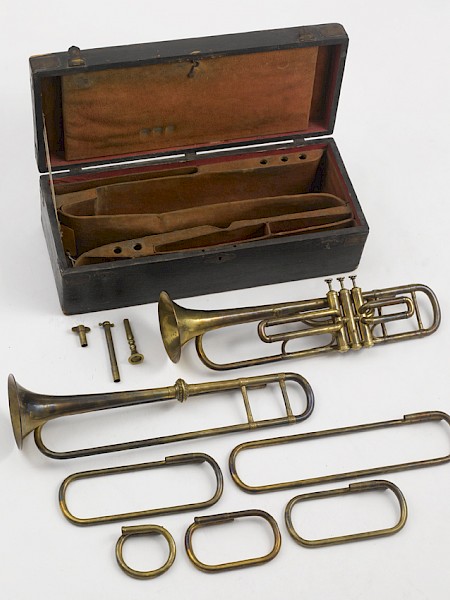Trumpets originally “only” played the notes of the harmonic series (some 16 notes in all), which was sufficient for many of the magnificent works of music history that needed the instrument; it was also enough for trumpeters who were employed at court. But today, we are used to having trumpets with valves.
The period from 1750 to 1850 is regarded as a time of transition from the natural to the valve trumpet. Different solutions were found and tried out in order to get the trumpet to play more notes than the harmonic series. Stopping the bell of the instrument with the hand was one possibility, while keys were tried such as were used on woodwind instruments. Movable slides were used, like on trombones, and valves of all sorts were constructed. Historical performance practice is today interested in these transitional instruments again. It can be inspiring for musicians to play the music of the time on replicas of the instruments for which it was written.


